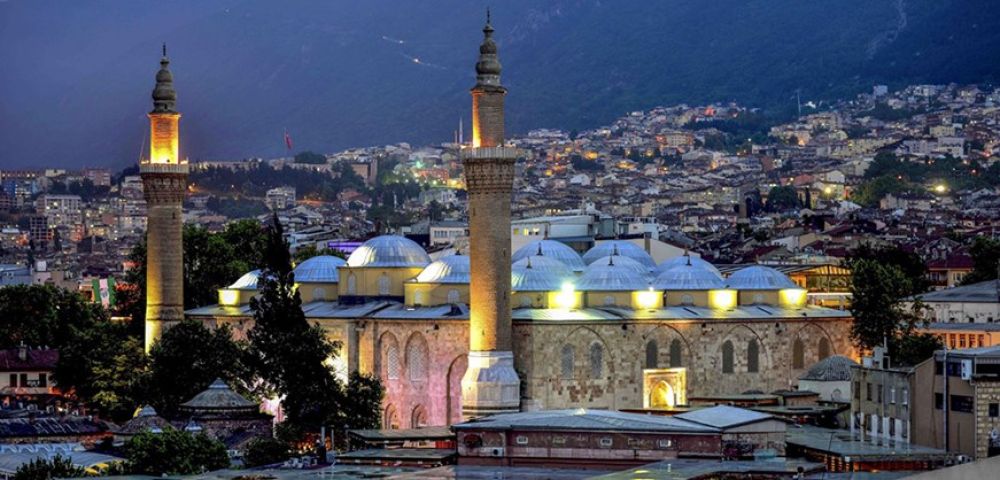

Ulu Cami, also known as the Grand Mosque of Bursa, is a masterpiece of Ottoman architecture and a significant historical landmark. The mosque has been a magnet for tourists and pilgrims since its completion in 1399 during the reign of Sultan Bayezid I. Historically, it played a dual role as both a place of worship and a social center within the city of Bursa, which served as the first Ottoman capital before Istanbul.
Tourism at Ulu Cami has evolved over centuries. Initially, its visitors were predominantly pilgrims and scholars drawn to its religious significance and extensive library. With the advent of modern tourism in the 19th and 20th centuries, the mosque started attracting history buffs and cultural tourists intrigued by its architecture and the role it played in the early Ottoman Empire.
The Ulu Cami stands out due to its notable architectural design, featuring 20 domes arranged in four rows, supported by 12 columns. This grand design creates a vast and open prayer space, which can accommodate thousands of worshipers. The mosque is also famous for its intricately carved walnut mimbar (pulpit), and the Seljuk-style calligraphy that adorns its walls, including the stunning work by calligrapher Ali bin Halef. The fountain inside the mosque, which allows light into the prayer hall, is another exemplary feature, drawing architectural enthusiasts to its doorstep.
The Grand Mosque serves as an emblem of the city's historical and cultural landscape. It has become an integral part of Bursa's identity, symbolizing the city's importance during the early period of the Ottoman Empire. Visitors to the mosque can immerse themselves in the spiritual and cultural heritage of Turkey, further enriched by the surrounding historical bazaars and old city structures.
In recent years, there has been a significant increase in experiential tourism, with travelers seeking to connect with the cultural and historical context of their destinations. Visitors to Ulu Cami are often seen engaging with local guides to gain deeper insights into the mosque's history and architecture. Moreover, the Turkish government's focus on conserving historical sites for future generations has seen the restoration and preservation of Ulu Cami, helping to maintain its appeal for both domestic and international tourists.
With the growth of digital and social media, virtual tours and online educational content about Ulu Cami have also emerged, reaching a broader audience worldwide. Furthermore, Bursa's inclusion on the UNESCO World Heritage List has increased global awareness and interest in the mosque and its surrounding heritage area.
For tourists planning to visit Ulu Cami, it is pivotal to note that the mosque is an active place of worship. It is open to visitors outside prayer times, and guests are expected to observe respectful dress and conduct. The best time to visit is between morning and early afternoon, which allows for a serene experience exploring the mosque's interior and exterior features. Entrance to the mosque is free, offering all visitors the chance to appreciate this historical jewel irrespective of budget.
The Grand Mosque of Bursa remains a testament to the profound spiritual and historical legacies of Turkey. As tourism trends shift towards more sustainable and meaningful travel experiences, Ulu Cami continues to stand as a beacon, offering a timeless window into the rich tapestry of Ottoman and Islamic history.